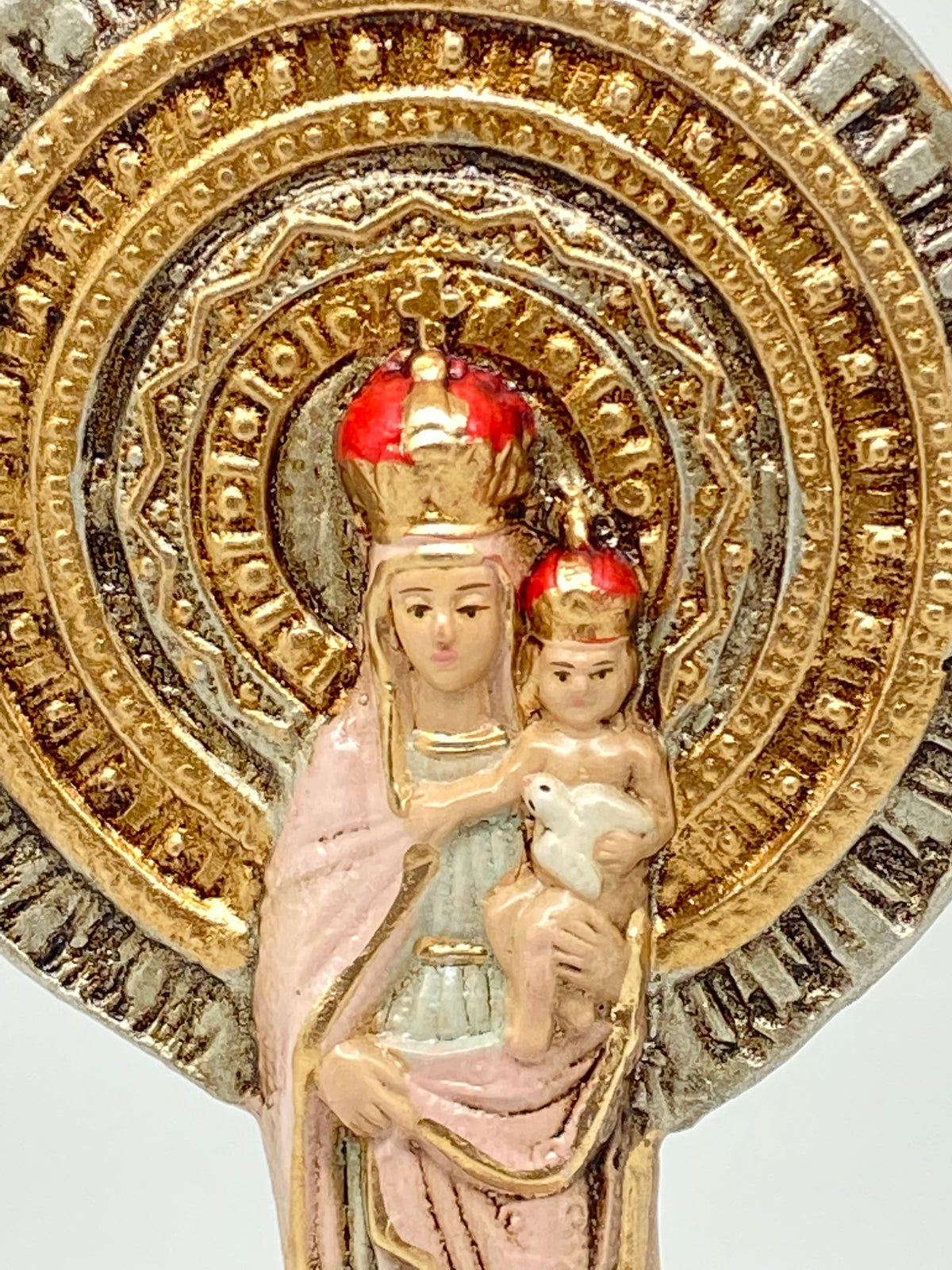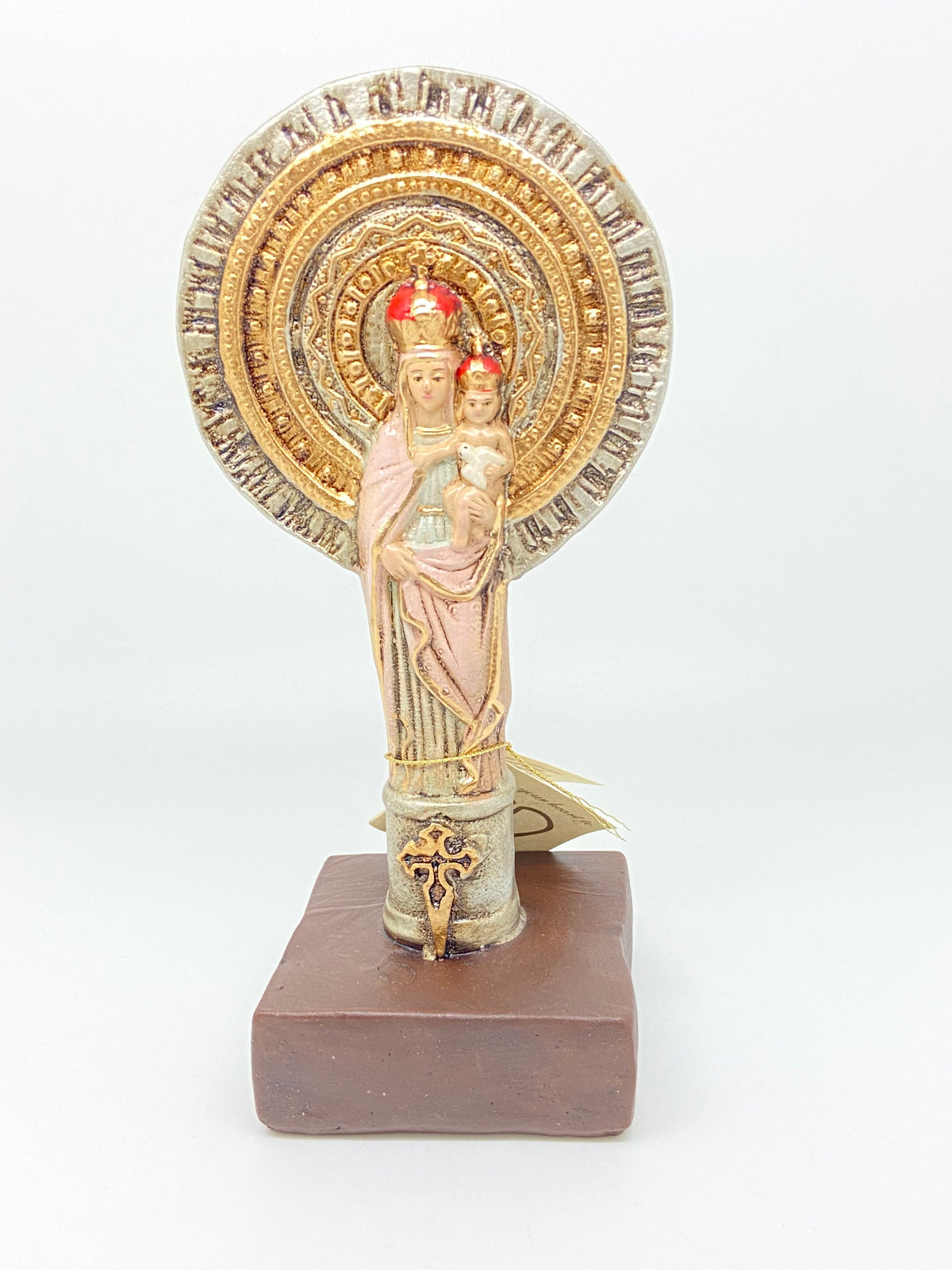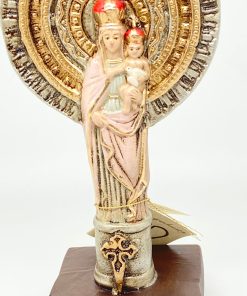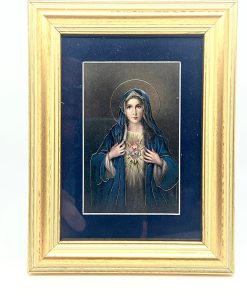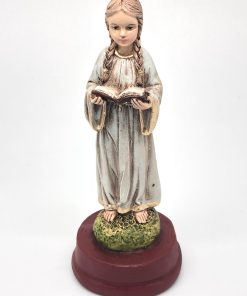Our Lady of Pilar 7 1/2″ LSCNO
$ 34,99 $ 20,99
Beautiful statue of Our Lady of Pilar This image is widely venerated by Spanish Catholics.
the origin of the Our Lady of Pilar shrine in Zaragoza, Spain, to the year 40 A.D., when St. James the Apostle was sitting here on the bank of the Ebro River, discouraged and heartsick at his lack of success in bringing Christianity to the region.
The Virgin Mary appeared to him and reassured him that his efforts would not be in vain. She also asked him to consecrate a church in her name, and left behind a pillar of jasper to mark the spot where she had made her appearance.
As Mary promised, St. James was indeed successful in bringing Christianity to Spain, and the place of his encounter with the Virgin became a holy place. Through the centuries—including years when Zaragoza was under Muslim control, when it suffered from plague and famine, and through years of civil war and unrest—this site has continued to draw the faithful.
Holy men and women such as St. John of the Cross, St. Teresa of Avila, and St. Ignatius of Loyola have all made the journey here to show their devotion to Our Lady of Pilar, who is the patroness of Spain.
The most prominent miracle associated with the shrine happened in the seventeenth century to a poor beggar named Miguel Juan Pellicer from the town of Calanda. Unable to work because of an amputated leg, he had a great devotion to the shrine and frequently prayed there for help. The Virgin Mary answered his prayers by restoring his missing leg, and after word spread of the miracle, the number of pilgrims to the church greatly increased.
Multiple church structures have occupied the site, each one larger than the one it replaced. Today the Basilica de Nuestra Senora del Pilar, as it is formally known, includes 11 brightly colored tiled domes and is the second biggest church in Spain (only the cathedral in Seville is larger). construction was begun in 1681 under the direction of King Charles II.
Parts of its interior date back even farther, including a magnificent main altar of alabaster designed by Damian Forment in the fifteenth century. Two of the frescos that line its domes were painted by Goya, the famous eighteenth-century Spanish artist who was born in the nearby village of Fuendetodos.
Our Lady of Pilar came to international prominence when in 1492 Christopher Columbus landed in the New World on her feast day of October 12. She was subsequently named patroness of the New World.
In the early twentieth century, the shrine also played an important role in the founding of the Opus Dei movement. As a young seminarian in Zaragoza, St. Josemaria Escriva, the founder of Opus Dei, made daily visits to Our Lady of Pilar to pray for guidance. Opus Dei members continue to honor her feast day each year.
Handmade in Colombia. Hand painted by local Artisans (Widows from the local violence) and finely crafted. The quality can be seen throughout the workmanship. The detail in wonderful.
Para la descripción en Español, utilice nuestro traductor ubicado en la esquina derecha.
Fast Shipping and professional packaging
Through our long-term relationship in a long-standing partnership with UPS, FedEx, DHL and many other leading global carriers, we are able to offer a variety of shipping options. Our warehouse staff are highly trained and will pack your products in accordance with our exact and accurate specifications. Before they are shipped your items will be thoroughly examined and secured. We ship to thousands of customers each day from multiple countries. This shows our commitment to becoming the biggest retailer online in the world. The distribution centers and warehouses distribution are located in Europe, as well as the USA.
Note: Orders containing more than one item will be assigned a different processing time for each item.
Prior to shipment We will examine thoroughly the items you've ordered. Today, the majority orders will be delivered within 48 hours. The delivery time varies between 3-7 days.
Returns
The inventory is always changing, and is not completely managed by us because of the involvement of multiple parties including the factory and our warehouse. The stock can change at any time. Please understand it may happen that your order will be out of stock once your order has been made.
Our policy is valid for a period of 30 days. Unfortunately, if the 30 days have elapsed from the date you purchased the item, we will not be able to offer you a return or exchange.
You are able to return an item if it is unused and still in the same condition when you received it. The item must be in the original packaging.
Related products
Mary Statue
Auto Accessories
Bookmark
Auto Accessories
Mary Statue
Pocket Medal
Ornament
Mary Statue
Pocket Medal
Mary Statue

